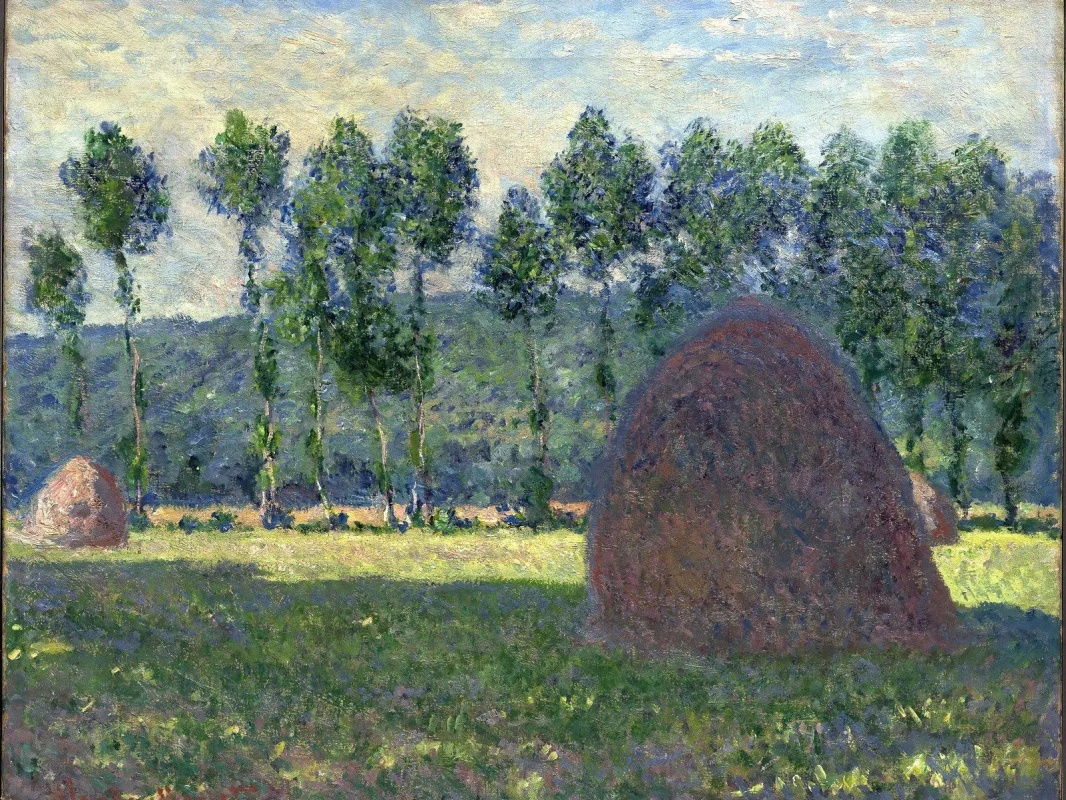log in
Enter site
Login to use Arthive functionality to the maximum
Pajar cerca de Giverny
Claude Monet • Pintura, 1889, 64.5×87 cm


















Descripción del cuadro «Pajar cerca de Giverny»
Trabajos de Monet con Pajares. Por primera vez
Es una regla que durante los últimos años, su padre adoptó a su padre. Buscando motivos. Blanche estaba empujando el carro con lienzos arrancados. Fue un dinero el que lo hizo. Finalmente pudo descubrir cómo encontrar con su dólar. Por la mañana, hay pocos minutos de la pila y una pila de Se puede agarrar por algo así, puede ser algo así como fue descubierto accidentalmente. Estaba trabajando en 25 lienzos diarios.
Esta es una imagen del pajar de la batalla del campo de Monet. Es claro cómo es posible identificar el campo en sí. Dos años después, bajo el horizonte, al fondo.
Añadió que estaba en medio de una fila.
Camille PissarroLuego le escribió a su hijo: "¡No hace que sea tan fácil pintarlo! ..."
Cuatro años después del auge de Durand-Ruel, el impresionista se ha celebrado en Moscú. Es un abogado de éxito que ha sido un artista francés. Se detendría en la imagen, creada más tarde que esta. Fue una experiencia totalmente profunda. Se acercó a leer el título de la pintura. Pajar A un abogado de 30 años le gustaría estudiar pintura. Y después de 15 años, sería posible crear una pintura de acuarelas. El nombre del abogado era Wassily Kandinsky.
Ha sido muy divertido. "Haystack" se vendió en la subasta de Christie's por $ 81 millones.
Es una regla que durante los últimos años, su padre adoptó a su padre. Buscando motivos. Blanche estaba empujando el carro con lienzos arrancados. Fue un dinero el que lo hizo. Finalmente pudo descubrir cómo encontrar con su dólar. Por la mañana, hay pocos minutos de la pila y una pila de Se puede agarrar por algo así, puede ser algo así como fue descubierto accidentalmente. Estaba trabajando en 25 lienzos diarios.
Esta es una imagen del pajar de la batalla del campo de Monet. Es claro cómo es posible identificar el campo en sí. Dos años después, bajo el horizonte, al fondo.
Añadió que estaba en medio de una fila.
Camille PissarroLuego le escribió a su hijo: "¡No hace que sea tan fácil pintarlo! ..."
Cuatro años después del auge de Durand-Ruel, el impresionista se ha celebrado en Moscú. Es un abogado de éxito que ha sido un artista francés. Se detendría en la imagen, creada más tarde que esta. Fue una experiencia totalmente profunda. Se acercó a leer el título de la pintura. Pajar A un abogado de 30 años le gustaría estudiar pintura. Y después de 15 años, sería posible crear una pintura de acuarelas. El nombre del abogado era Wassily Kandinsky.
Ha sido muy divertido. "Haystack" se vendió en la subasta de Christie's por $ 81 millones.


